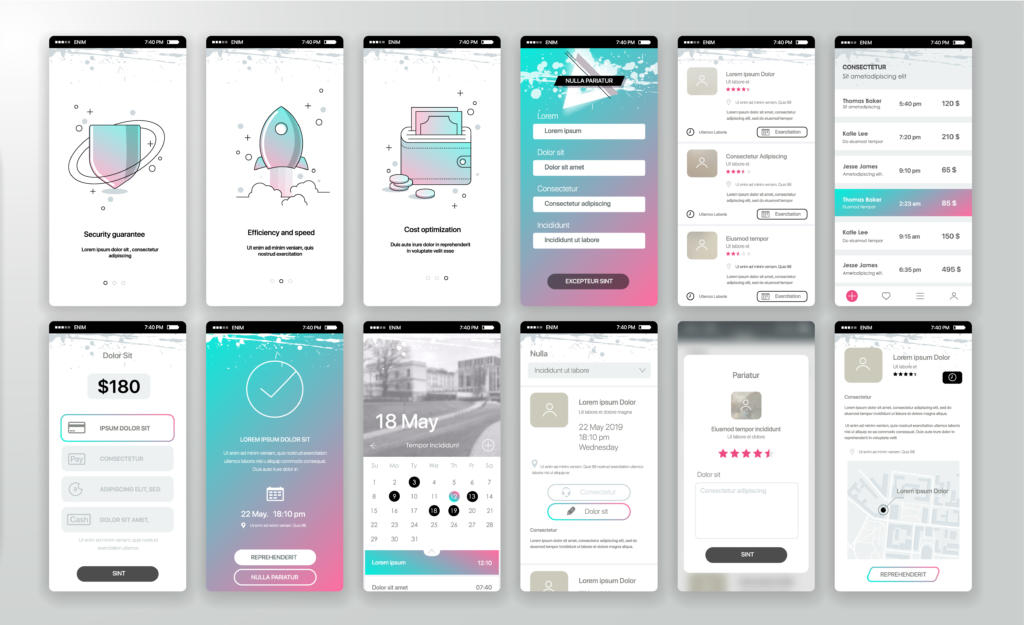
An aesthetically and experientially effective web or app user-interface forms an important part of your brand image.
It is where clients come to know your product, your values and your unique selling points.
A poor user experience will have an immediate negative effect on brand perception, whereas a positive user experience will bolster your position.
This article explores the ways in which you can protect these assets.
Registered Designs
There are two kinds of design rights in the UK; registered and unregistered.
Unregistered design rights protect the appearance of many functional, tangible products and occur automatically. Importantly however, unregistered design right does not cover surface decoration. This article will therefore focus on registered design at UK level.
Registered designs can be used to protect surface decoration, which means that they may be used to protect the appearance or layout of your UI. To be capable of registration, a design must be:
- new; and
- have individual character.
Where you have created an interface that is bespoke and unique in its appearance, you may be able to prevent other people from using it by registering your design.
A UK registered design gives you exclusive rights in a design, in the UK, for up to 25 years. It puts others on notice of your rights and is a proof of your right. You can use your registered design right to stop others from making or otherwise distributing a product/service to which your design is applied.
Registered designs are relatively inexpensive, but could add considerable value to your business as part of your intellectual property protection arsenal.
Similar rights exist at European Union level (called as Registered Community Design).
You can read more about registered designs here.
Trade marks
Effective marketing will encourage your customers to associate your products, services and the positive experience that they have on your website/app with your name and your logo. If you are doing something well, you want to ensure that all the credit for their positive user experience is coming back to you.
Trade mark registrations can help you to achieve this. They are territory specific and should be applied for in your key markets.
So long as you keep paying the renewal fees, a registered trade mark can provide you with a monopoly in your brand name and/or logos for the relevant products or services you provide for the lifetime of your business.
If someone is imitating your branding for similar or identical products/services, but you do not have appropriate trade mark registrations, you will need to rely on common law rights to defend your business. This is called making a “passing-off” claim. This is more expensive and time consuming.
Copyright
Your UI and UX have not materialised out of thin air – time and money have gone into their creation. There is intellectual property (read, value) in both your website/app and their content.
In this instance, copyright is the key intellectual property right to consider as it will subsist in most of your content as well as the code/software that supports your website.
It is a common misconception that if you pay a third-party to develop a product or supply a service then you will automatically own the intellectual property in the end product. This is not the case and it is important to ensure that you own all of the copyright relating to your website/app.
Where you have outsourced development to a third party, or hire third party photographers and content-generators, they will need to transfer copyright ownership to you by way of an assignment. If they do not transfer the rights to you, you may be restricted in the ways in which you can use their work.
Database rights
The effective exploitation of your databases serves to inform the development and bespoking of your UX.
Your website/app is a key entry point for data into your business. Used effectively, this data should provide insight into your key demographics, client purchasing habits, activity, churn, etc. However, unless data is arranged in a systematic or methodical way, it is unlikely to bear the fruits you are hoping for.
Enter database rights
Database right is an automatically occurring right in the databases you create (provided they satisfy certain criteria) which allows you to prevent unauthorised re-use and extraction of data from your databases. Protecting your databases and exploiting these rights effectively may be central to providing unique, outstanding UX and business growth. You should consider how you keep your databases confidential and the terms on which you make them available to third parties (if at all!).
